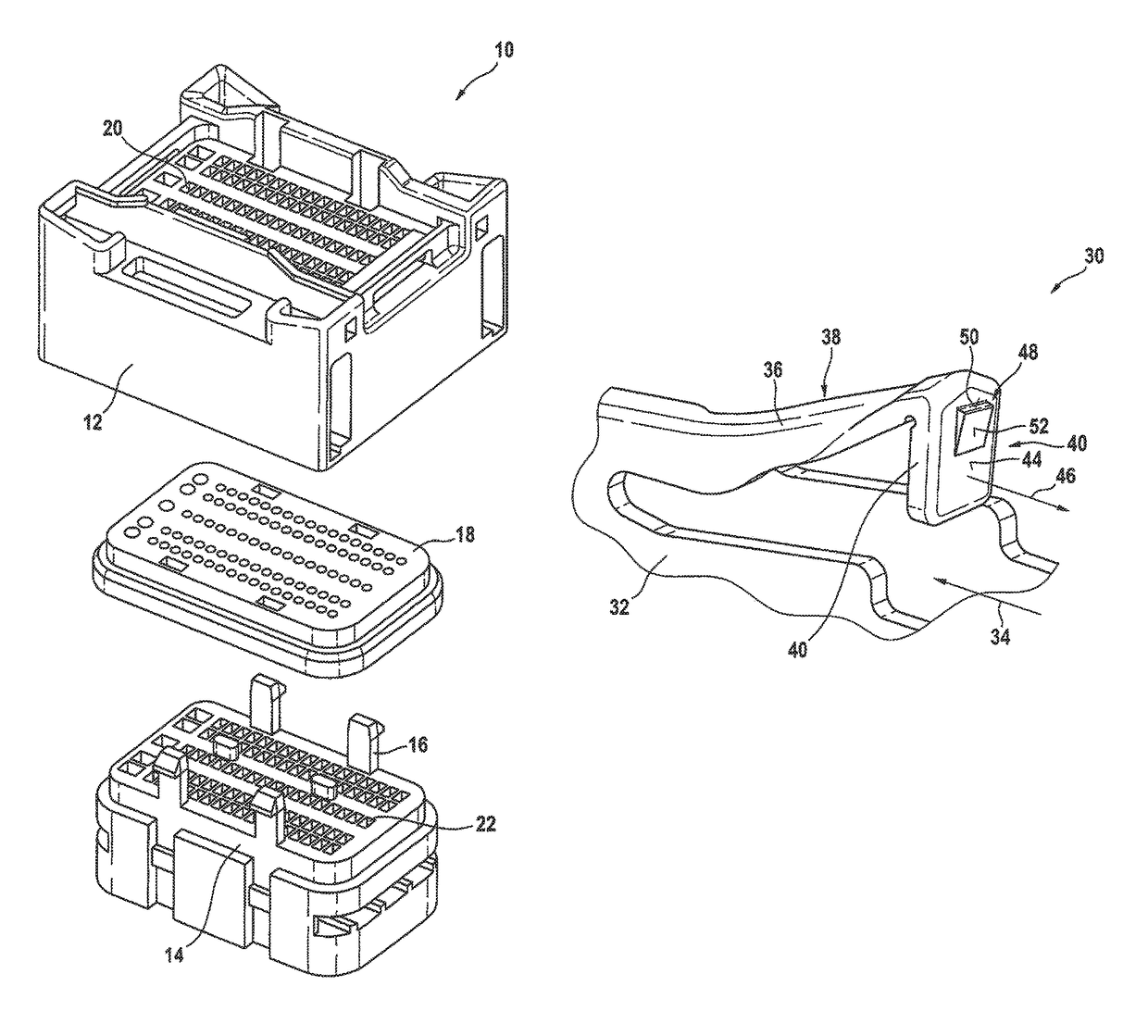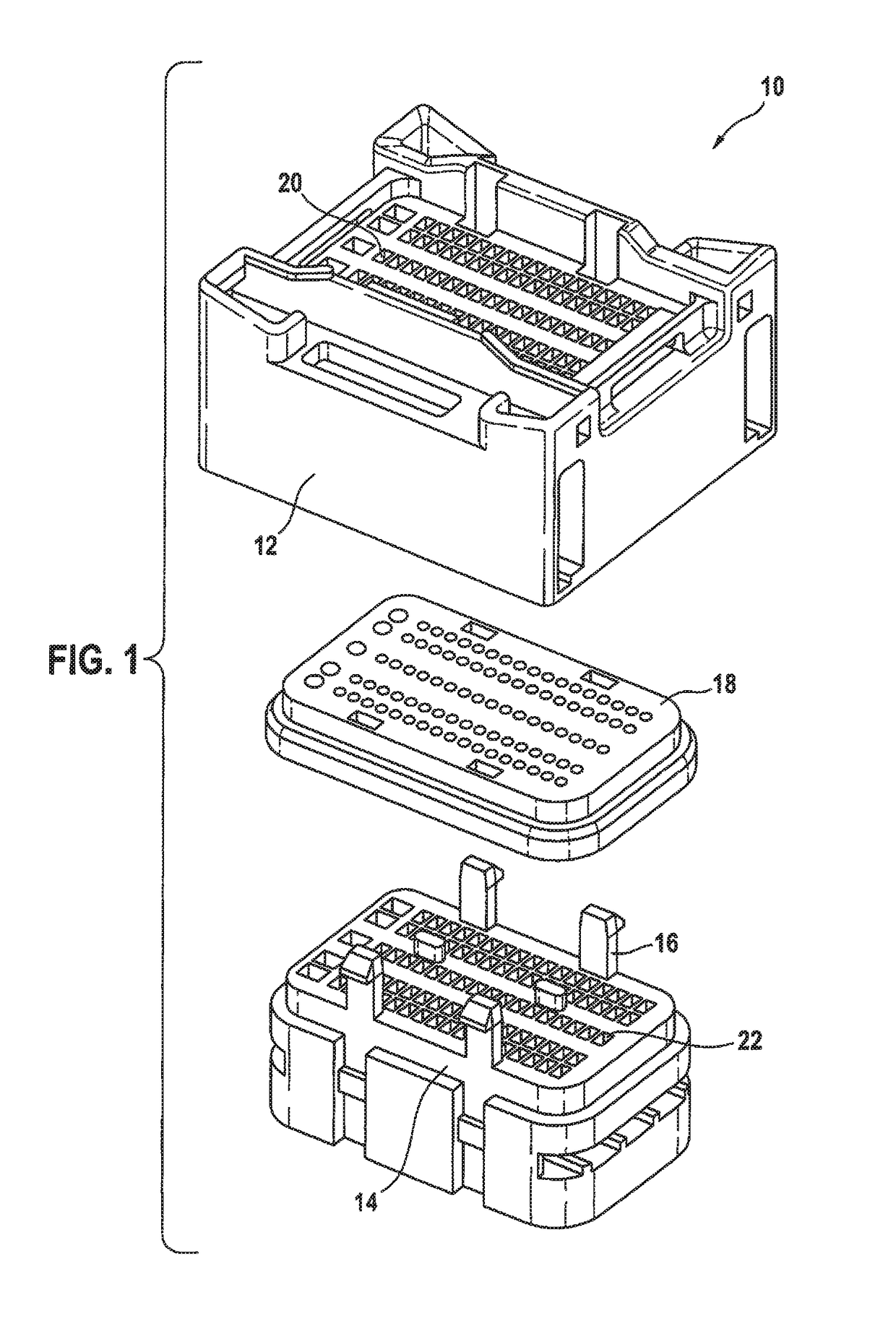Catch element of a contact having a nose-shaped projection
a catch element and projection technology, applied in the field of electric contacts, can solve the problems of increasing the particular torque acting on the root of the catch element, difficult to satisfy these contradictory demands, and deflection of the catch element away from the housing, so as to improve the elasticity and reduce the hardness of the material. , the effect of increasing the friction
- Summary
- Abstract
- Description
- Claims
- Application Information
AI Technical Summary
Benefits of technology
Problems solved by technology
Method used
Image
Examples
Embodiment Construction
[0036]FIG. 1 shows one example of a plug 10 of a plug-in connector, which may be mechanically and electrically configured for being combined with a corresponding counterplug (not shown). Plug 10, for example, may be used for the mechanical and electrical connection of a plurality of cables to one another or of a cable tree to a control unit in a motor vehicle. Plug 10 has an upper housing part 12 and a lower housing part 14, which are able to be mechanically connected to each other via catch tabs 16. A sealing mat 18 is situated between upper housing part 12 and lower housing part 14. Through-feeds 20 for the mechanical stabilization of the respective electrical line are provided in upper housing part 12, and the associated contact cavities 22 are provided in lower housing part 14. The cables and the contacts fixed in place on their ends (not shown here) are introduced through through-feeds 20 in upper housing part 12 and through sealing mat 18 into lower housing part 14 and fixed i...
PUM
 Login to View More
Login to View More Abstract
Description
Claims
Application Information
 Login to View More
Login to View More - R&D
- Intellectual Property
- Life Sciences
- Materials
- Tech Scout
- Unparalleled Data Quality
- Higher Quality Content
- 60% Fewer Hallucinations
Browse by: Latest US Patents, China's latest patents, Technical Efficacy Thesaurus, Application Domain, Technology Topic, Popular Technical Reports.
© 2025 PatSnap. All rights reserved.Legal|Privacy policy|Modern Slavery Act Transparency Statement|Sitemap|About US| Contact US: help@patsnap.com



